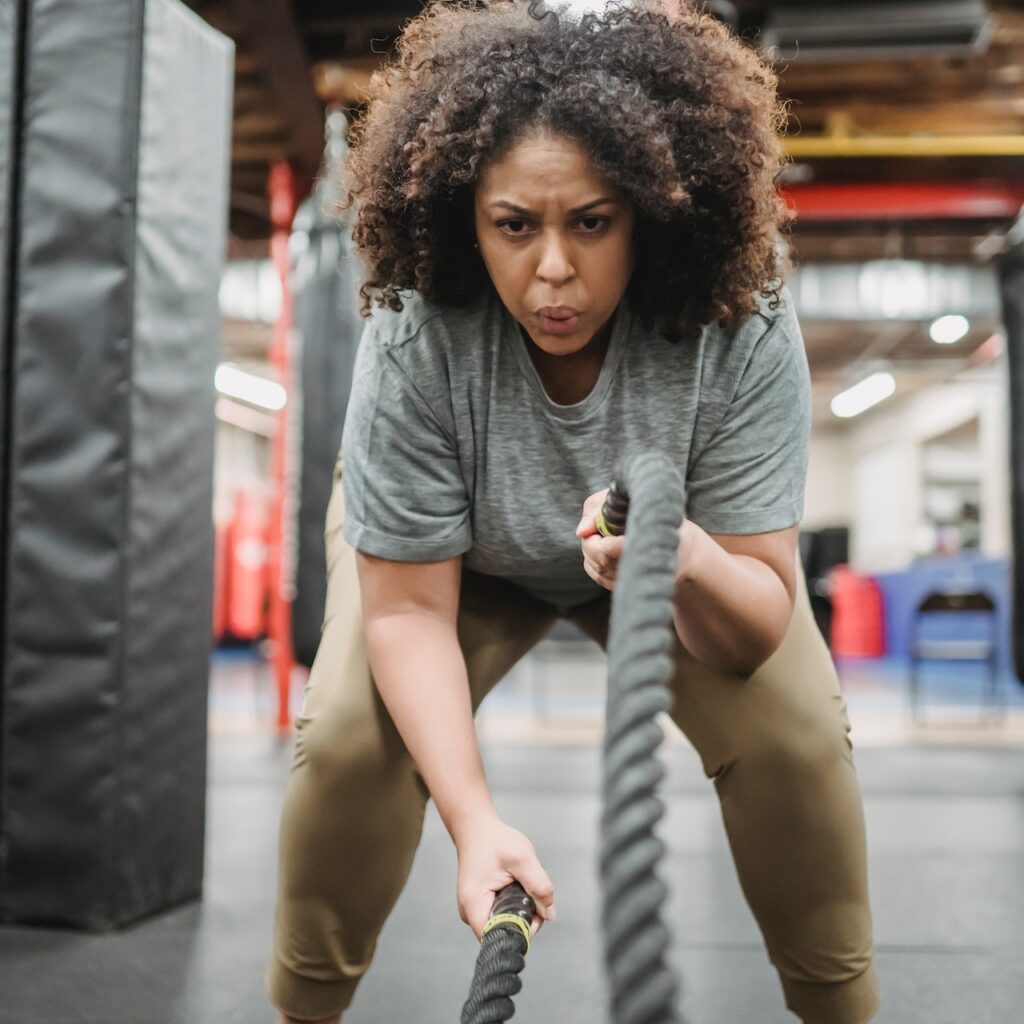Muscular endurance is your ticket to a vibrant life
Are you ready to unlock the secret to a more vital, energetic, and youthful life? The key might be closer than you think – in your muscles. Muscular endurance, a critical aspect of fitness, holds the power to transform your health and keep aging at bay.
In this comprehensive guide, we will explore the importance of muscular endurance, how it acts as a potent anti-aging tool, and a curated list of exercises to help you build and maintain it. However, remember, safety should be your top priority; always consult a physician before starting any exercise program.
Why is Muscular Endurance Important?
Muscular endurance refers to your muscles’ ability to sustain contractions over an extended period. It is not limited to athletes or fitness enthusiasts; it’s an essential component of overall health. Here’s why it’s so crucial:
1. Enhanced Physical Performance: Muscular endurance significantly improves your physical performance. It allows you to perform everyday tasks with ease, from carrying groceries to climbing stairs.
2. Metabolic Boost: Building muscular endurance can elevate your metabolism. When your muscles work efficiently, you burn more calories even at rest, making weight management more manageable.
3. Improved Bone Health: Regular resistance training to enhance muscular endurance can also contribute to better bone density, reducing the risk of osteoporosis.
4. Delayed Aging: One of the most compelling reasons to prioritize muscular endurance is its role in preventing the aging process. As we age, muscle mass naturally decreases, leading to frailty, decreased mobility, and a higher risk of injury. Muscular endurance can help counteract these effects, preserving muscle strength and overall vitality.

Battle Rope is an excellent endurance workot
Preventing Aging with Muscular Endurance
How does muscular endurance play a part in defying aging? Let’s take a closer look:
1. Preserving Muscle Mass: The natural loss of muscle mass as we age is known as sarcopenia. It’s a significant contributor to frailty and loss of mobility. Muscular endurance exercises, when performed regularly, help maintain and even build muscle mass, ensuring you stay strong and active.
2. Boosting Metabolism: A sluggish metabolism is often associated with aging, leading to weight gain and decreased energy. Muscular endurance exercises rev up your metabolic rate, helping you maintain a healthy weight and higher energy levels.
3. Enhancing Cardiovascular Health: Many exercises that promote muscular endurance, such as cycling and swimming, also provide cardiovascular benefits. A strong heart and healthy blood vessels are crucial for longevity.
4. Supporting Bone Density: Osteoporosis, a condition where bones become fragile and prone to fractures, is more common as we age. Engaging in weight-bearing muscular endurance exercises, like squats, can increase bone density and reduce the risk of fractures.
Exercises to Build Muscular Endurance
Now that you understand why muscular endurance is important let’s explore a range of exercises that can help you build it. Incorporate these into your fitness routine and experience the benefits firsthand:
1. Push-Ups: This classic exercise targets your chest, shoulders, and triceps. It’s an excellent way to build upper body muscular endurance.
2. Planks: Planks are fantastic for core strength and overall muscular endurance. They engage multiple muscle groups simultaneously.
3. Squats: Squats work your lower body and are a fantastic way to increase muscular endurance in your legs and glutes.
4. Cycling: Cycling is not only great for your cardiovascular health but also for building muscular endurance in your legs.
5. Swimming: Swimming is a full-body workout that engages nearly every muscle group. It’s an excellent choice for enhancing muscular endurance while being gentle on the joints.
6. Bodyweight Exercises: Exercises like burpees, mountain climbers, and lunges are effective bodyweight exercises that challenge your muscular endurance.
7. Resistance Training: Incorporate resistance bands or weights into your workouts to increase the intensity and promote muscular endurance in various muscle groups.
8. Yoga and Pilates: These practices improve flexibility, balance, and overall muscular endurance while promoting relaxation and stress reduction.
9. High-Intensity Interval Training (HIIT): HIIT workouts incorporate bursts of high-intensity exercise followed by short rest periods. They are an effective way to improve muscular endurance and burn calories.
Consult a Physician Before You Begin
While the benefits of muscular endurance are numerous, it’s crucial to approach fitness with care, especially if you’re new to exercise or have underlying health conditions. Always consult a physician before starting a new workout program. They can provide guidance and ensure that your exercise regimen aligns with your individual health needs, helping you avoid potential risks or injuries.
In conclusion, muscular endurance is your key to a vibrant and active life. By understanding its importance, its role in preventing aging, and incorporating the right exercises into your routine, you can enjoy a healthier, more youthful future. Just remember to prioritize safety and consult a physician before embarking on any fitness journey. Your well-being is worth the investment.



